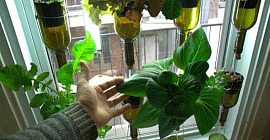

Volunteering in Late Life: A Shield Against Cognitive Decline and Dementia
Tuesday, 25 July 2023 16:09Volunteering in late life may be more than just a noble act of giving back to the community; it could be a critical factor in safeguarding the brain against cognitive decline and dementia.

Why I Love Wasps -- And Why You Should Too
Saturday, 08 May 2021 08:43Humanity has always had a rocky relationship with wasps. They are one of those insects that we love to hate. We value bees (which also sting) because they pollinate our crops and make honey

15 Minutes of Intense Activity Can Improve Heart Health
Saturday, 01 May 2021 08:12High-intensity interval training (HIIT) workouts have become popular in recent years for a number of reasons. They don’t require as much time as a regular workout (some can take as little as 10...

How Our Immune System Fights Respiratory Viruses: Explained
Friday, 28 July 2023 17:45Respiratory viruses like influenza virus (flu), SARS-CoV-2 (which causes COVID) and respiratory syncytial virus (RSV) can make us sick by infecting our respiratory system, including the nose, upper...

4 Steps to Making Your Home a Sanctuary of Love and Joy using Space Clearing
Thursday, 06 May 2021 00:51Have you ever walked into an empty room and immediately sensed that the atmosphere was laced with tension? You may have had no idea what occurred there prior to your arrival, yet you somehow knew...

Beating the Heat: How to Train Your Body for Hot Weather Outdoors
Thursday, 27 July 2023 20:13How to train your body for hot weather if you are active or work outdoors Heat exposure is inevitable for those who work or are active outdoors. (Shutterstock) Global warming is making outdoor...


